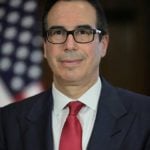The federal government released a set of regulations Wednesday that are meant to stimulate investment in businesses and real estate projects in financially distressed areas.
The regulations are meant to clarify rules governing “opportunity zones,” or 8,700 low-income areas that are scattered across the country. The program works by giving people tax breaks when they invest their realized capital gains — or money generated from the sale of assets such as stocks or property — in projects that lie within the specially designated zones.
Lawmakers created the opportunity zone program in 2017 with the goal of stimulating the economy in disadvantaged areas. People taking advantage of the program are able to defer, reduce, or — depending on the duration of their opportunity zone investment — completely avoid taxes on their capital gains.
However, despite being a year and a half old, various aspects of the program had remained unclear, a fact that observers blamed for keeping some investors’ money away. For example, prior regulations didn’t specify exactly what tax scenario an investor faced after selling one opportunity zone asset and then purchasing another one with the profit.
There were also ongoing questions related to property located in opportunity zones, and to how a company that qualified for opportunity zone investment was allowed to generate revenue.
The new regulations, announced by the Internal Revenue Service (IRS), are meant to clear up such ambiguities. For example, investors will now have 12 months to take their proceeds from the sale of one opportunity zone asset and put them into another while still reaping various tax benefits.
 The 3 most common questions luxury buyers ask
Respond to high-net-worth buyers with local expertise READ MORE
The 3 most common questions luxury buyers ask
Respond to high-net-worth buyers with local expertise READ MORE
Multiple government officials Wednesday framed the new rules as a way to unleash investment in designated opportunity zones.

Ben Carson | Credit: HUD
“There are a lot of entrepreneurs in some of these economically deprived areas but unlike the Princeton graduate who has lots of connections they can’t get anyone to back what they’re doing,” Housing and Urban Development Secretary Ben Carson said at a news conference. “This will help to alleviate that problem.”
Carson also painted a grim picture of life in an opportunity zone, saying among other things that median incomes, homeownership rates, and life expectancies are all significantly lower than in other parts of the country.
“The residents of opportunity zones are indeed some of the nation’s most needy and underserved,” Carson said. Spurring investment in these areas, however, is meant to reverse some of those problems.
Thus far, much of the money flowing into opportunity zones has gone toward real estate investments, particularly on the coasts, according to the New York Times. But that may change in the future; during Wednesday’s press conference, Treasury Secretary Steven Mnuchin acknowledged the role that real estate has played, but added that the program is also geared toward other kinds of businesses as well.

Steven Mnuchin
“A lot of people look at the real estate opportunity,” Mnuchin said, “but what we’re very excited about is the opportunity to create new businesses or expand existing businesses in opportunity zones.”
Mnuchin went on to say that the Treasury Department and the IRS have tried to create “flexibility for communities and investors” working with the program.
Though investors are only now getting clarity on some key parts of opportunity zone regulation, the program has already been having an impact — and generating some controversy. Earlier this year, for example, a report from Zillow revealed that home prices in the zones had skyrocketed.
The program has also tended to attract investment from Wall Street and wealthy families, according to the New York Times, and has raised concerns about gentrification. Earlier this year, for instance, William Fulton — director of Rice University’s Kinder Institute for Urban Research — argued that opportunity zones have the potential to produce “gentrification on steroids.”
Source: click here














